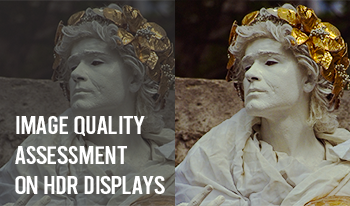
Conventional image quality metrics (IQMs), such as PSNR and SSIM, are designed for perceptually uniform gamma-encoded pixel values and cannot be directly applied to perceptually non-uniform linear high-dynamic-range (HDR) colors. Similarly, most of the available datasets consist of standard-dynamic-range (SDR) images collected in standard and possibly uncontrolled viewing conditions. Popular pre-trained neural networks are likewise intended for SDR inputs, restricting their direct application to HDR content. On the other hand, training HDR models from scratch is challenging due to limited available HDR data. In this work, we explore more effective approaches for training deep learning-based models for image quality assessment (IQA) on HDR data. We leverage networks pre-trained on SDR data (source domain) and re-target these models to HDR (target domain) with additional fine-tuning and domain adaptation. We validate our methods on the available HDR IQA datasets, demonstrating that models trained with with our combined recipe outperform previous baselines, converge much quicker, and reliably generalize to HDR inputs.

Domain Adaptation (DA) techniques aim to overcome the domain shift between a source domain used for training and a target domain used for testing. In recent years, vision transformers have emerged as a preferred alternative to Convolutional Neural Networks (CNNs) for various computer vision tasks. When used as backbones for DA, these attention-based architectures have been found to be more powerful than standard ResNet backbones. However, vision transformers require a larger computational overhead due to their model size. In this paper, we demonstrate the superiority of attention-based architectures for domain generalization and source-free unsupervised domain adaptation. We further improve the performance of ResNet-based unsupervised DA models using knowledge distillation from a larger teacher model to the student ResNet model. We explore the efficacy of two frameworks and answer the question: is it better to distill and then adapt or to adapt and then distill? Our experiments on two popular datasets show that adapt-to-distill is the preferred approach.